Travel Talk friendly guide in the world
1.Amer Fort (Amber Fort) - The Majestic Marvel
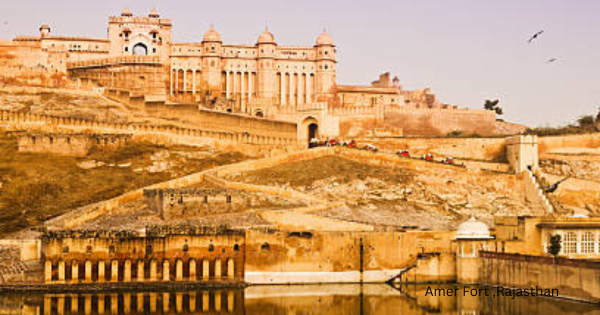
Just Top 10 attractions in jaipur, Amer Fort, also known as Amber Fort, beckons with its majestic allure. Perched atop a hill, this architectural masterpiece narrates the tales of the Rajputana era. The fort’s intricate design, adorned with ornate palaces, sprawling courtyards, and intricate frescoes, is a captivating journey through time. As you explore the Diwan-i-Aam, Diwan-i-Khas, and the stunning Sheesh Mahal, each step echoes with the grandeur of a bygone era. From the formidable ramparts, the panoramic views of the surrounding Aravalli Hills and Maota Lake create a mesmerizing backdrop
2.Nahargarh Fort - A Tranquil Retreat
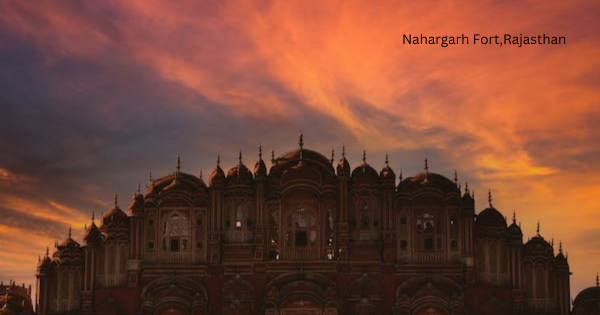
Venturing Top 10 attractions in jaipur the tranquil Nahargarh Fort stands as a guardian on the Aravalli hills. Built in the 18th century, it served as a retreat for the royals, offering not only a vantage point for defense but also a haven of peace. The fort’s architecture blends seamlessly with the natural landscape, and as you navigate through its labyrinthine passages, you’ll discover hidden courtyards and serene viewpoints. Sunset from Padao, the fort’s rooftop restaurant, paints the sky with hues of orange and pink, casting a spell of tranquility over the city below.
3.Jaigarh Fort - Guardian of the Pink City
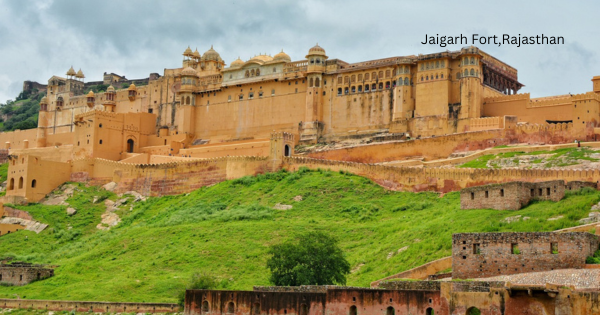
Adjacent to Amer Fort, Jaigarh Fort stands as a sentinel, preserving the military might of the Rajput rulers. Approximately 15 kilometers from Jaipur, this imposing structure reveals the strategic brilliance of its architects. The fort’s massive walls, watchtowers, and sprawling complexes showcase the military prowess of the Rajputana dynasty. The highlight, undoubtedly, is the world’s largest cannon, Jaivana, a testament to the engineering marvels of the time. As you walk through the interconnected chambers and corridors, the panoramic views of the Aravalli Hills provide a stunning backdrop to this historical marvel. Jaigarh Fort is not just a testament to military strength but also a window into the opulence of Rajasthan’s royal heritage.
4.City Palace - Where History Lives On
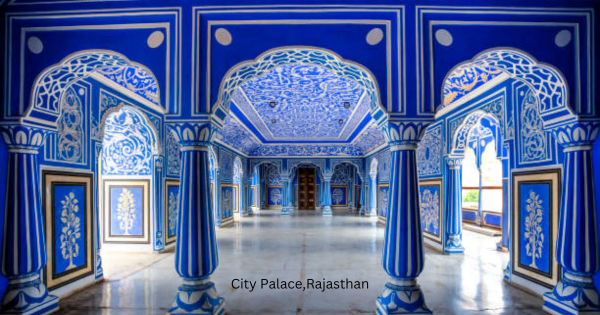
Nestled in the heart of Jaipur, the City Palace stands as an epitome of royal opulence and architectural grandeur. Built in the 18th century, this sprawling complex boasts a harmonious blend of Rajput, Mughal, and European styles. As you traverse its courtyards, museums, and intricately decorated chambers, each step narrates the history of Jaipur’s erstwhile rulers. The Chandra Mahal and Mubarak Mahal showcase exquisite artifacts, textiles, and weapons, providing a vivid glimpse into the regal lifestyle. With its elegant architecture and timeless charm, the City Palace preserves the legacy of Rajasthan’s rich cultural heritage, inviting visitors to immerse themselves in a bygone era.
5.Jal Mahal - Serenity Amidst the
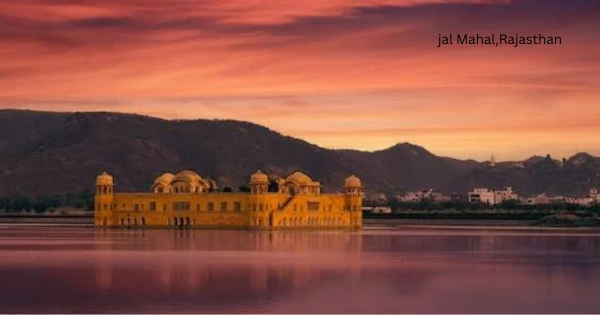
Perched gracefully on the tranquil waters of Man Sagar Lake, Jal Mahal presents a picture of serenity amid the bustling city. Built with red sandstone and featuring a unique architectural blend of Rajput and Mughal styles, the palace seems to float, mirroring its beauty in the calm lake. While the palace itself is inaccessible, the lakeside offers a mesmerizing view, especially during sunrise and sunset. Surrounded by the Aravalli hills, Jal Mahal becomes a peaceful retreat, inviting contemplation and appreciation for the architectural marvel that enhances Jaipur’s picturesque landscape.
6.Hawa Mahal - The Palace of Breezes
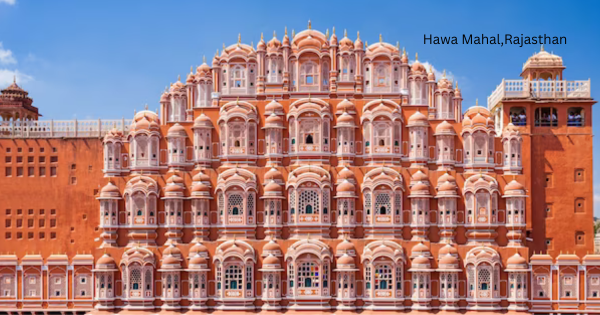
An iconic symbol of Jaipur, Hawa Mahal, also known as the Palace of Winds, is a captivating architectural marvel. Built in 1799 by Maharaja Sawai Pratap Singh, its distinctive honeycomb facade comprises 953 small windows (jharokhas) that allow the royal women to observe street festivals while remaining unseen. The intricate lattice work not only facilitates a gentle breeze but also casts a mesmerizing play of light and shadow. As the pink sandstone structure stands tall in the heart of the Old City, Hawa Mahal remains a poetic testament to the fusion of artistry and practicality, where history whispers through its ornate corridors and timeless design.
7.Jantar Mantar - A Celestial Journey
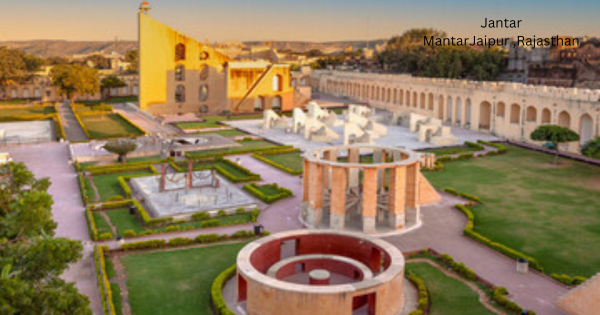
As the world’s largest stone astronomical observatory, Jantar Mantar transports visitors on a celestial journey within the heart of Jaipur. Built in the early 18th century by Maharaja Sawai Jai Singh II, this UNESCO World Heritage Site comprises a collection of architectural instruments that accurately measure time, predict eclipses, and track celestial bodies’ movements. The Samrat Yantra, a giant sundial, stands as the highlight, showcasing ancient Indian astronomical prowess. Navigating through the geometrically precise structures, visitors not only witness scientific ingenuity but also gain a profound appreciation for the advanced knowledge that flourished in historic India.
8.Albert Hall Museum - A Glimpse into the Past
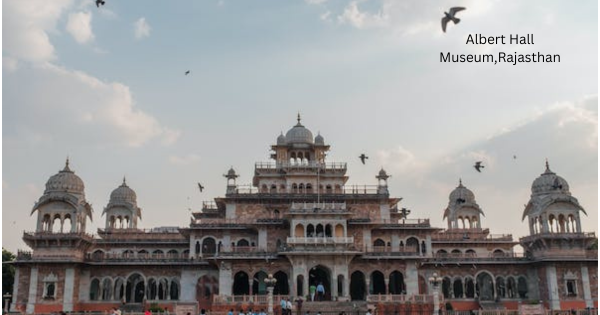
Nestled in the enchanting surroundings of Ram Niwas Garden, the Albert Hall Museum is a time capsule that transports visitors to the bygone eras of Rajasthan. Established in 1876, it stands as the oldest museum in the state, showcasing an extensive collection of artifacts, from ancient sculptures to historical artifacts and decorative arts. The Indo-Saracenic architecture of the building itself is a visual treat, adorned with domes, arches, and intricate carvings. As you wander through its galleries, you’ll encounter exhibits that unravel the cultural, artistic, and historical tapestry of Rajasthan. The museum serves as a testament to the vision of Maharaja Sawai Ram Singh II, who aimed to create a space that preserves and celebrates the rich heritage of the region.
9.Birla Mandir - Serene Elegance
Vishnu and Goddess Lakshmi, is a tranquil oasis in the heart of Jaipur. Surrounded by lush gardens and adorned with intricate carvings, the temple offers a serene atmosphere for devotees and visitors alike. As sunlight dances on the pristine marble surfaces, the temple becomes a haven for introspection and peaceful contemplation. The intricate sculptures and delicate craftsmanship narrate tales of devotion, making Birla Mandir not just a religious site but also a cultural gem that exudes timeless elegance in the Pink City’s landscape.
10.Galta Ji Tample (Monkey Temple) - A Spiritual Oasis
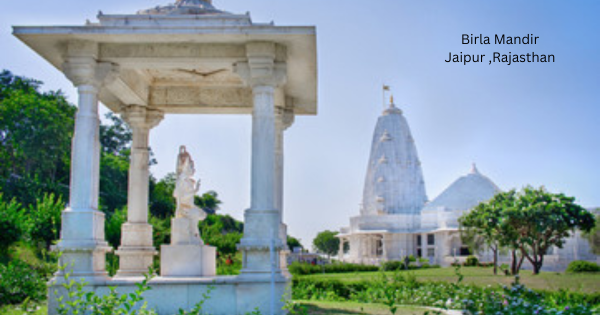

Tucked away amidst the Aravalli Hills, about 10 kilometers from Jaipur, Galta Ji Tample, also known as the Monkey Temple, offers a serene escape from the city’s hustle. This sacred site is a complex of temples, pavilions, and natural springs, where a troop of playful monkeys roams freely. Steeped in mythological significance, the temple complex exudes an aura of spirituality. The main temple, dedicated to the Sun God, features stunning architecture with intricately carved pillars and painted walls. As you ascend the temple premises, the panoramic views of Jaipur and the surrounding hills create a tranquil atmosphere, making Galta Ji a unique and peaceful retreat for both spiritual seekers and nature enthusiasts.
conclusion
As you explore these Top 10 attractions in jaipur let history live on, embrace the spiritual oasis, and witness a glimpse into the past. Whether immersed in the cultural tapestry at the museum or finding solace amidst playful monkeys, every journey unveils a new facet of Jaipur’s rich legacy. So, step beyond the familiar, for in these hidden treasures, the true essence of Rajasthan awaits, promising an unforgettable experience where history, spirituality, and elegance seamlessly converge. From the historical forts to the serene lakeside palaces, each place has a story to tell. So, pack your bags and set out on a journey to explore the hidden gems Top 10 attractions in jaipur, where every step unveils a new chapter in the vibrant history of Rajasthan.




